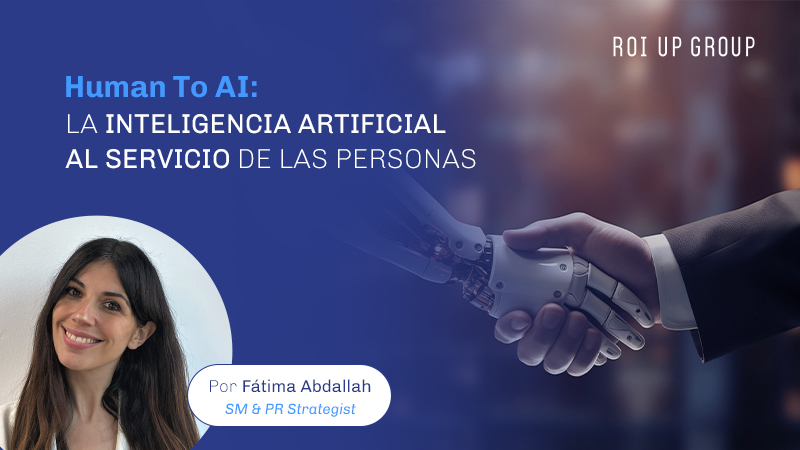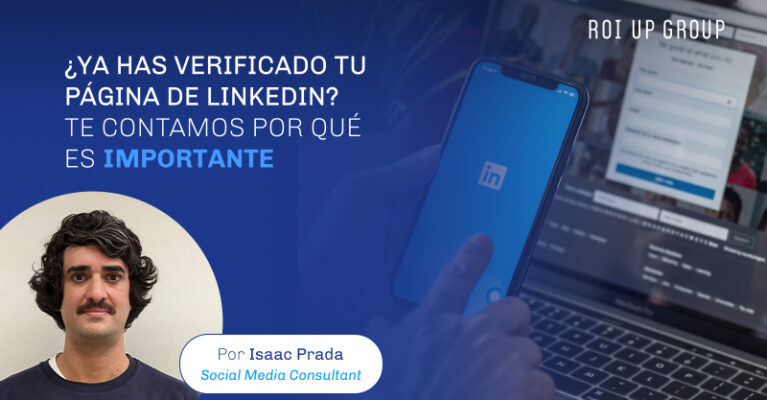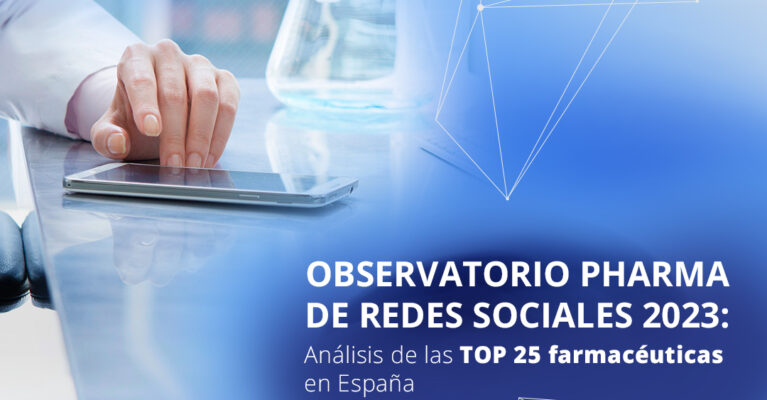
The advancement and improvement of AI is unstoppable, but its strategic use, as well as its level of efficiency and professionalization, still depends on human beings. The same goes for its ethical and responsible implementation. These are technological challenges that we welcome with optimism from ROI UP Group, a project of more than 12 years that embraces change and innovation because they are linked to our Reason Why. But that has the firm conviction that people are the ones who must lead this disruptive path, rather than being mere objects receiving change: this is what the Human to AI approach is all about.
The coexistence between AI and enterprises
After a preliminary phase of AI, characterized by a kind of ‘mirage’ in which it seemed that, as a society, we only celebrated its advantages, we welcome a more mature stage . A stage in which, as companies, we begin to develop a much more critical sense that, in turn, allows us to position ourselves at a strategic level. When and how did we decide to adopt this disruptive technology‘ At which moments or in which processes? We agree that AI and humans must coexist and not substitute the former for the latter, but how do we carry it out from the companies?”
These seem like relatively simple questions, but not all companies have developed their roadmap on the uses of AI, beyond the technical implementation. Therefore, if, as companies, we adopt a series of solid premises placing the human factor at the center ( Human Friendly approach), this organized vision will help us to take a step further in our strategic decisions and, consequently, in the creation of new synergies and fruitful opportunities for our business.
Human to AI: humanization of AI is a plus for innovation and business prospects
Let’s start with something relatively simple, but that not every company knows very well how to do. For those who understand their businesses and companies as much more than mere money factories, it is important to start from the Human To AI approach. This term places the team at the center and pivots on innovation and those disruptive technologies that help us to enhance our business, such as AI.
But, for it to make sense, this must be evident in all business areas of the company as a ‘manifesto’ and, if possible, be developed in specific roadmaps for the different departments of the company. In short, it is vital that employees perceive AI as an advantage and not as a threatto their professional capabilities.
But it is also important to go a step further and take into account a double aspect. On the one hand, the implementation of processes supported by Artificial Intelligence that make it clear that they accompany, and do not replace, people. On the other hand, as a team, we must have a vigilant and responsible attitude in order to make efficient use of this AI and to be able to strategically differentiate ourselves from other competitors.
Because AI has been created by and for human beings and it is only from this premise that we should contribute professionally. As Yann LeCun, a well-known French-American computer scientist in the Tech sector, quoted not long ago: “Our intelligence is what makes us human, and AI is an extension of that quality”. Why, then, should we relegate people to the background? It doesn’t seem like a wise decision. After all, it has already been proven that AI is not coming to replace us, but to enhance our professional capabilities. Now, let’s move on to the tactical phase of AI TO HUMAN.
Human To AI: AI solves, empowers, complements. The human decides
AI can perform those more tedious and repetitive tasks in an efficient manner, saving costs without impacting teams, and allowing them to focus on more creative or meaningful processes. In addition, AI can, and should, take over real-time data analysis, but decisions about that data should still be made by humans. They are the ones who have the critical ability and the ‘big picture’ to determine what is best for a company.
It is true that the implementation of these AI technologies allows us to use objective and neutral tools in record time, optimizing our processes and tasks and, in many cases, saving costs. In the case, for example, of departments dedicated to talent and professional retention, we use it for automation and performance monitoring. In MarTech, for predictive analytics, and in creativity, to optimize certain phases of the complex and conceptual field of design. Not to mention the already diverse tools that exist in the fields of communication, teaching, mathematics and statistics.
But, we insist, in matters of AI it is vital not to be overshadowed by the ‘presentism’ or partial approach that many companies have adopted, in which it seems that there will be no room for human capacity and AI will relentlessly replace us from the map of the usual professional tasks.
AI cannot replace empathy, judgment and human deliberation, which are so important for many business axes, where MarTech agencies, such as ours, are located. It is undeniable: human capacity allows contextualizing, interpreting and making ethical decisions, as well as strategic ones, something that AI does not allow either.
Challenges of AI: Emotional Artificial Intelligence, key to the processes that characterize digital marketing.
AI, being a relatively new technology, still presents several challenges, so these should be viewed with enthusiasm, but with caution by companies. In this sense, there is a challenge that, timidly, is beginning to be worked: Emotional Artificial Intelligence, undoubtedly alluding to the capabilities, exclusively human, to generate emotional bonds with people.
In the case of humans, for example, one of the great advantages of teams is the ability to work in environments with uncertainty or scarcity of information, which leads to a high level of flexibility. In contrast, AI proposes rigid systems that do not have the capacity to adapt to complex environments such as these. Trust is another great bastion that is necessary in customer interaction, and marketing automation should not replace this human quality. For example, a nuance in an ad hoc explanation of a product or, more generally, the commitment and bond that the marketer is able to offer to potential – or already established – leads.
The use of Emotional Artificial Intelligence keeps users interested and keeps them coming back, while sealing a memorable experience, so it needs to be polished. And for this you need, once again, human beings behind it. Or, rather, at the center.
In short, the Human To AI trend is, for us, the summary of how Artificial Intelligence itself should be conceived: a technology created and internalized by human eyes for human interests.
We are living in a new communication paradigm that inevitably affects Marketing and Technology: a paradigm characterized by multi-experience and horizontality, where all voices finally seem to have a voice and where all elements of the consumption chain have value in themselves. In this stimulating scenario that shows how people are at the center, the humanization of AI is key. And it is there, from that place, where we want to continue to contribute to the MarTech universe.
Are you joining Human To AI? We are already working on it.
List of Social Media publications
- Were the best claims in history in their early days?
- A inteligência artificial nas redes sociais e nas relações públicas
- Artificial intelligence in social networks and PR
- We launch our 2023 social media observatory for the pharma sector
- Faster than the jewels of the Rally Clásico Mallorca
- Improve engagement in your social media strategy
- Digital Detox in times of confinement? Count me out
- Identity theft in social networks: what to do
- Young people, the new communication challenge for Real Estate (II)
- Instagram marketing strategies for businesses




